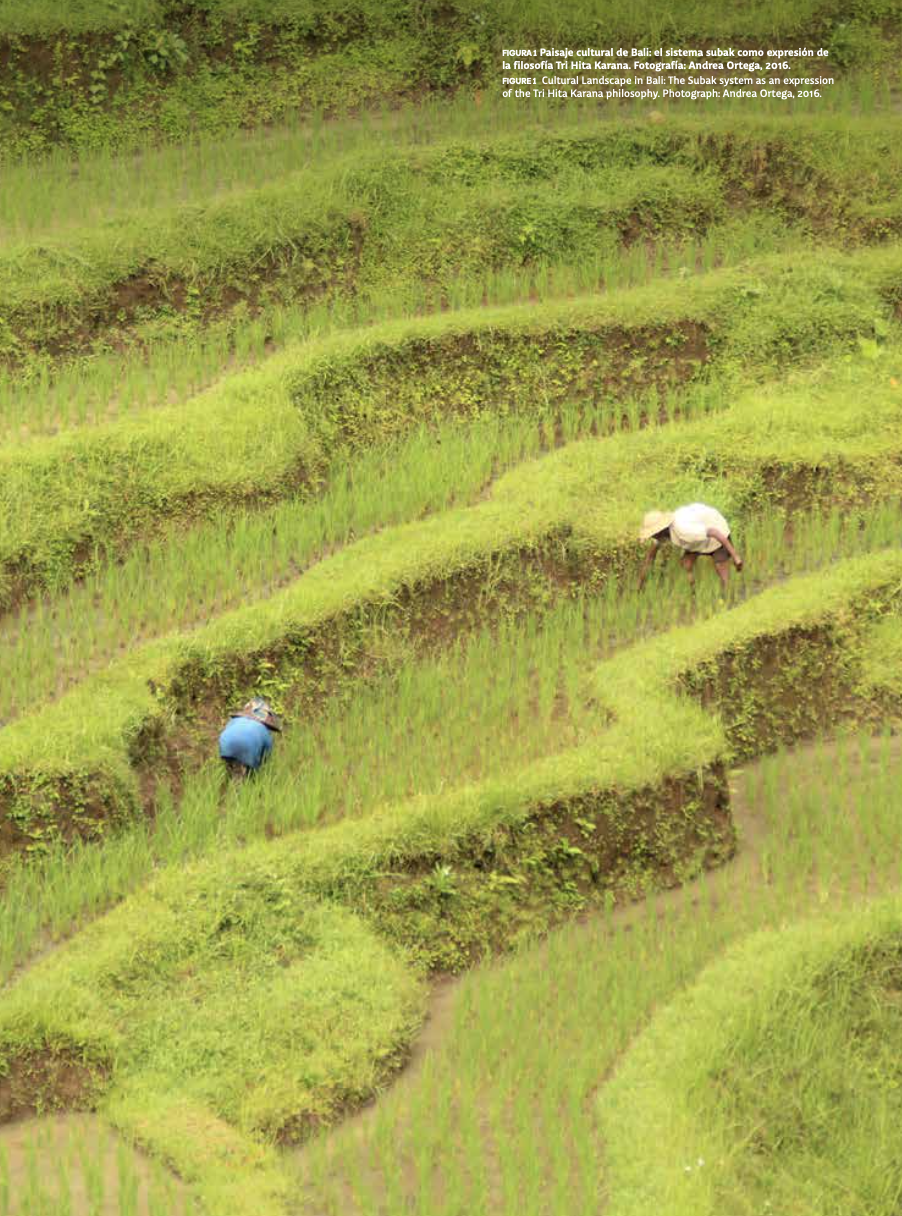Refusing the Monumentalist Approach to Heritage Conservation: Toward an Adaptive Approach in the Context of the Climate Crisis
Article Sidebar

Keywords:
Main Article Content
Abstract
Despite the fact that climate change is a certain threat to the present and future of heritage, the historical relationship between the environment and human settlements reflects creative and adaptive processes from which we can learn in our current context. Thus, the practice of conservation demands an adaptive approach through a careful management of change. This definitively implies refusing the monumentalist approach to heritage, oriented merely towards the static conservation
of monuments, which has dominated conservation theory and practice since the 19th century. The concept of adaptive heritage expressly recognizes changing conditions and diverse allocations that arise from social value, considering the need to understand heritage areas as parts of a larger landscape and recognizing that planners and decision-makers, in the face of the challenges imposed by the 21st century, need to respond more effectively.
Article Details

This work is licensed under a Creative Commons Attribution-NonCommercial 4.0 International License.
Materia Arquitectura provides immediate and free access to all the content of this online edition, published simultaneously with the print edition.
Materia Arquitectura does not charge authors for any concept.
All contents of this electronic edition are distributed under the Creative Commons license of "Attribución-shareAlike 4.0 Internacional" (CC-BY-SA).
The rights of the published texts and images belong to their authors, who grant Materia Arquitectura the license for their use. The management of the permits and the authorization of the publication of the images (or of any material) that contains copyright and its consequent rights of reproduction in this publication is the sole responsibility of the authors of the articles.
As long as they mention their origin, the authors are free to distribute their articles by other means. Any total or partial reproduction of the material must mention its origin.
Downloads
References
ArAOz, G. F. (2011). Preserving Heritage Places under a New Paradigm. Journal of Cultural Heritage Management and Sustainable Development, 1(1), 55–60. https://doi. org/10.1108/20441261111129933
BLAKE, J. (2000). On Defining the Cultural Heritage. The International and Comparative Law Quarterly, 49(1), 61–85.
BrABEC, E., & CHILtON, E. (2015). Toward an Ecology of Cultural Heritage. Change Over Time, 5(2), 266–285. https://doi.org/10.1353/cot.2015.0021
BULLEN, P. A. (2007). Adaptive Reuse and Sustainability of Commercial Buildings. Facilities, 25(1/2), 20–31. https:// doi.org/10.1108/02632770710716911
ByrNE, D. (1991). Western Hegemony in Archaeological Heritage Management. History and Anthropology, 5(2), 269–276. https://doi.org/10.1080/02757206.1991.9960815
CHOAy, F. (2001). The Invention of the Historic Monument (L. M. O’Connell, Trans.). Cambridge University Press.
CLIMAtE. (2021). Special Issue “Adaptive Heritage: Inclusive, Climate Sensitive Futures for Landscapes Containing Internationally-Designated Protected Areas” [Call for Papers; Special Issue Editor Jim Perry]. Climate.
CLIMAtE HErItAGE NEtWOrK. (2021). Acelerar la acción climática a través del poder de las artes, la cultura y el patrimonio. Un manifiesto sobre mantener vivo 1.5 ° COP26. https://climateheritage.org/wp-content/uploads/ CHN-COP-26-Manifesto-SPANISH-10.4.pdf
COOMBE, r. J. (2017). Managing Cultural Heritage as Neoliberal Governmentality. In R. F. Bendix, A. Eggert, & A. Peselmann (Eds.), Heritage Regimes and the State (pp. 375–387). Göttingen University Press. http://books. openedition.org/gup/405
DOrMAELS, M. (2011). Patrimonio, patrimonialización e identidad. Hacia una hermenéutica del patrimonio. Revista Herencia, 24(1–2).
HArVEy, D. A., & PErry, J. (2015). Heritage and Climate Change: The Future is not the Past. In D. A. Harvey & J. Perry (Eds.), The Future of Heritage as Climates Change (Chap. 1). Routledge.
ICOMOS. (1999). Carta de Burra—Carta del icomos Australia para Sitios de Significación Cultural. https://australia. icomos.org/wp-content/uploads/Carta-de-Burra-Burra- Charter-in-Spanish.pdf
LAFrENz SAMUES, K. L. (2015). Introduction: Heritage as Persuasion. In K. Lafrenz Samuels & T. Rico (Eds.), Heritage Keywords: Rhetoric and Redescription in Cultural Heritage (pp. 3–28). University Press of Colorado.
LOrUSSO, S. (2014). Critical Heritage in Cross-Cultural Perspectives. Interdisciplinarity, Internationalization and Social Media in Cultural Heritage: Some Case Studies. Conservation Science in Cultural Heritage, 14(2), Article 2. https://doi.org/10.6092/issn.1973-9494/5446
MUNJErI, D. (2004). Tangible and Intangible Heritage: From Difference to Convergence. Museum International, 56(1–2), 12–20. https://doi.org/10.1111/j.1350-0775.2004.00453.x
ONU. (2015). Ozbjetivos de desarrollo sostenible. Desarrollo Sostenible. https://www.un.org/sustainabledevelopment/ es/objetivos-de-desarrollo-sostenible/
OrtEGA, A. (2020). Managing the Landscape Values of Urban Heritage: A Critical Analyisis of the UNEsco’s Recommendation on the Historic Urban Landscape in Valparaíso, Chile [PhD Dissertation, University of Melbourne]. http://hdl.handle.net/11343/239137
PENDLEBUry, J. (2013). Conservation Values, the Authorised Heritage Discourse and the Conservation-planning Assemblage. International Journal of Heritage Studies, 19(7), 709–727. https://doi.org/10.1080/13527258.2012.700282
PErry, J., & GOrDON, I. J. (2021). Adaptive Heritage: Is This Creative Thinking or Abandoning Our Values? Climate, 9(8), Article 8. https://doi.org/10.3390/cli9080128
POULIOS, I. (2010). Moving Beyond a Values-Based Approach to Heritage Conservation. Conservation and Management of Archaeological Sites, 12(2), 170–185. https://doi.org/10.11 79/175355210X12792909186539
SMItH, L. (2006). Uses of Heritage. Routledge.
SWENSON, A. (2013). The Rise of Heritage: Preserving the Past in France, Germany and England, 1789–1914. Cambridge University Press.
tAyLOr, K., CLAIr, A. S., & MItCHELL, N. J. (Eds.). (2014).
Conserving Cultural Landscapes: Challenges and New Directions. Routledge.
ANDREA ORTEGA ESQUIVEL NEGACIÓN DEL MONUMENTALISMO EN LA CONSERVACIÓN DEL PATRIMONIO / REJECTING THE MONUMENTALIST APPROACH TO HERITAGE CONSERVATION
75
tAyLOr, K., & LENNON, J. (Eds.). (2012). Managing Cultural Landscapes. Routledge. https://doi. org/10.4324/9780203128190
tU, H.-M. (2020). The Attractiveness of Adaptive Heritage Reuse: A Theoretical Framework. Sustainability, 12(6), Article 6. https://doi.org/10.3390/su12062372
UNESCO. (2008). Directrices Prácticas para la aplicación de la Convención del Patrimonio Mundial. https://whc.unesco. org/archive/opguide08-es.pdf
UNESCO. (2011). Recomendación sobre el Paisaje Urbano Histórico. https://whc.unesco.org/uploads/activities/ documents/activity-638-100.pdf
VECCO, M. (2010). A Definition of Cultural Heritage: From
the Tangible to the Intangible. Journal of Cultural Heritage, 11(3), 321–324. https://doi.org/10.1016/j.culher.2010.01.006
VELDPAUS, L., KrAJEWSKA, O., MIAH, & SzEMzö, H. (2020).
Adaptive Heritage Reuse: Learning from Policy and Governance Frameworks across Europe [Open Heritage Policy Brief #1]. ICLEI Europe. https://openheritage.eu/ wp-content/uploads/2020/12/Open-Heritage-policy- brief-01-pages.pdf
WAtErtON, E., & SMItH, L. (2010). The Recognition and Misrecognition of Community Heritage. International Journal of Heritage Studies, 16(1–2), 4–15. https://doi. org/10.1080/13527250903441671
WINtEr, t. (2014). Heritage Studies and the Privileging of Theory. International Journal of Heritage Studies, 20(5), 556–572. https://doi.org/10.1080/13527258.2013.798671